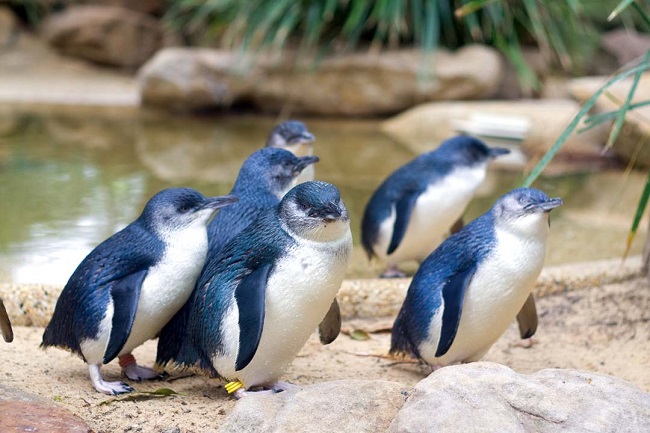
The blue penguin, scientifically known as Eudyptula minor, is a remarkable and endearing species of penguin that captivates the hearts of many with its small size and striking blue plumage. This enchanting bird, also commonly referred to as the little penguin or fairy penguin, is a unique and fascinating creature that inhabits the coastal regions of the Southern Hemisphere. In this article, we will explore the native territory of the blue penguin, its crucial role in the environment, its average size, and the remarkable way in which it raises its young.
Native Territory
The blue penguin is predominantly found in the coastal regions of the Southern Hemisphere, particularly in Australia and New Zealand. They are known to inhabit various islands and coastlines, including the shores of Tasmania, New South Wales, Victoria, and South Australia in Australia, as well as the North and South Islands of New Zealand. These penguins are well adapted to living near the ocean, where they have access to their primary source of food: small fish and crustaceans.
Role in the Environment
Blue penguins play a vital role in maintaining the health and balance of the marine ecosystems they call home. They are carnivorous predators, primarily preying on small fish, such as anchovies, pilchards, and krill, as well as a variety of crustaceans. By consuming these species, blue penguins help control their populations, preventing overpopulation of certain marine creatures and maintaining the stability of the food web.
Furthermore, blue penguins are excellent indicators of the health of their marine environments. Changes in their population size or health can often signify broader issues such as shifts in fish stocks or alterations in oceanic conditions. Conservation efforts aimed at protecting blue penguins also benefit other marine species and their habitats.
Average Size
One of the most distinctive features of the blue penguin is its diminutive size, which sets it apart from its larger penguin relatives. On average, blue penguins stand at a mere 12 to 16 inches tall and weigh between 2.2 to 3.3 pounds. Their small size makes them vulnerable to predators, including seabirds, seals, and even domestic animals like dogs, which underscores the importance of conservation efforts to protect these charming creatures.
Raising Their Young
Blue penguins have a unique and fascinating approach to raising their young. They are known to be monogamous, forming long-term pair bonds with their chosen mate. During the breeding season, these pairs work together to build burrows or nest boxes in which they lay their eggs. These burrows are typically located in coastal vegetation, sand dunes, or rocky crevices, providing protection and shelter for their offspring.
Once the eggs are laid, both parents take turns incubating them, ensuring a constant and warm temperature for the developing embryos. This cooperative behavior allows the birds to share the responsibilities of incubation and hunting for food.
When the chicks hatch, they are entirely dependent on their parents for food and protection. The parents take turns bringing back regurgitated food to feed their hungry offspring. As the chicks grow, their reliance on their parents decreases, and they become more independent. Blue penguins reach maturity at around 2 to 3 years of age and may live for up to 6-7 years in the wild, although their lifespan can be significantly longer in captivity.
Conclusion
The blue penguin, with its small stature, striking blue plumage, and unique nesting habits, is a true marvel of the Southern Hemisphere. These remarkable birds play a critical role in maintaining the health and balance of marine ecosystems, while their cooperative approach to raising their young highlights the depth of their social bonds.
Related Articles & Free Email Newsletter Sign Up
The Kestrel is a Marvel of Adaptation and Ecological Balance
The Majestic Canada Goose: A Marvel of Migration and Adaptation
Unveiling the Allure of the Bird of Paradise: Nature’s Extravagant Performer


Comment here